Reminiscences – a particularly nice plant of Haworthia mutica.
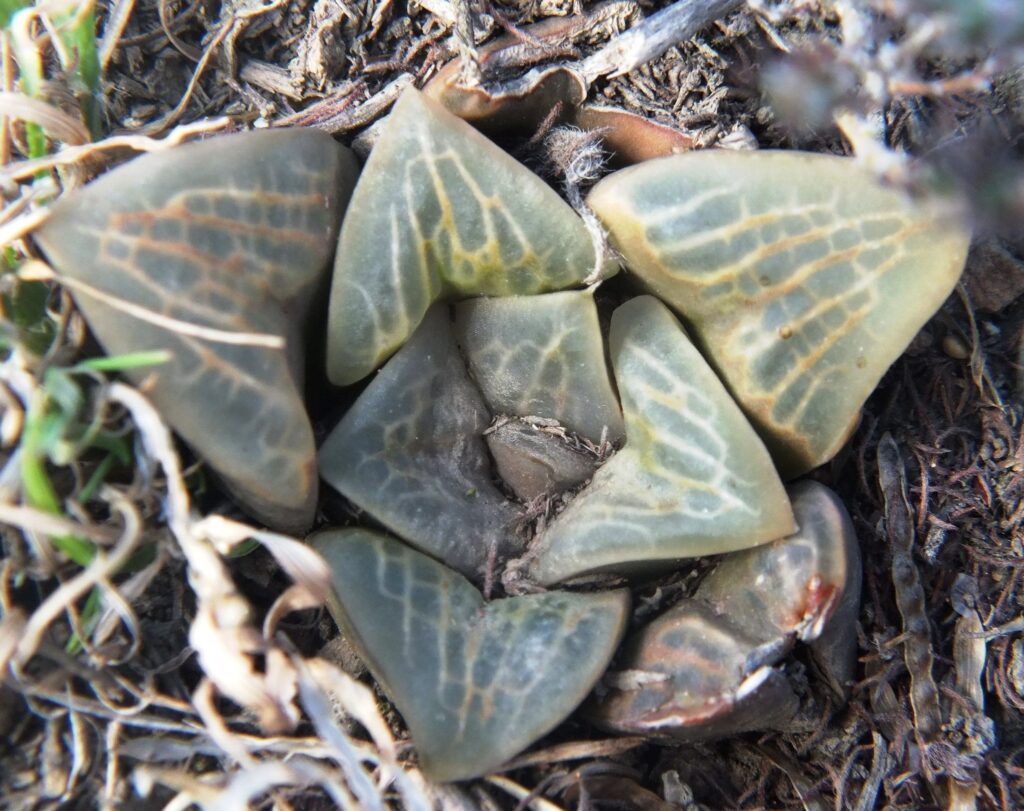
It seems a picture cannot ever capture the essence of the living plants in nature. These are also H. mutica down south and east of Bredasdorp.
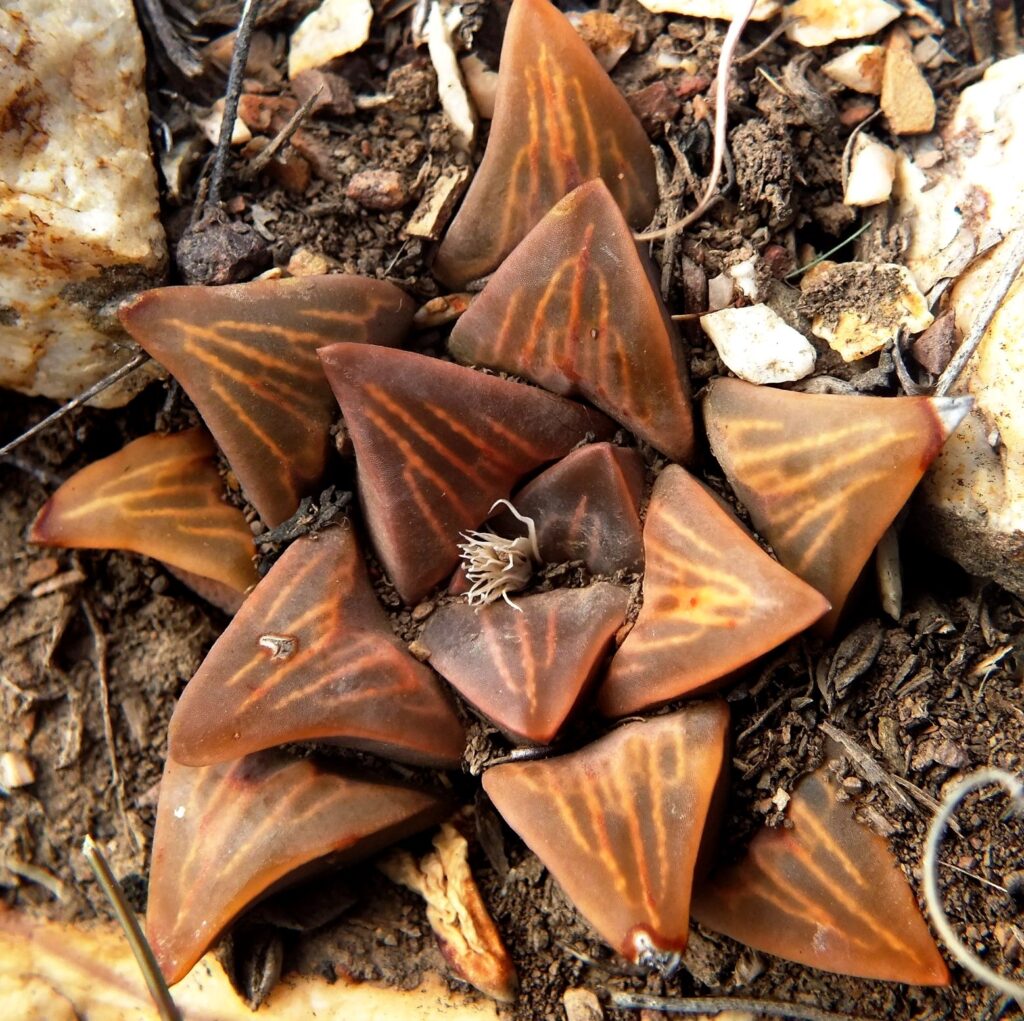
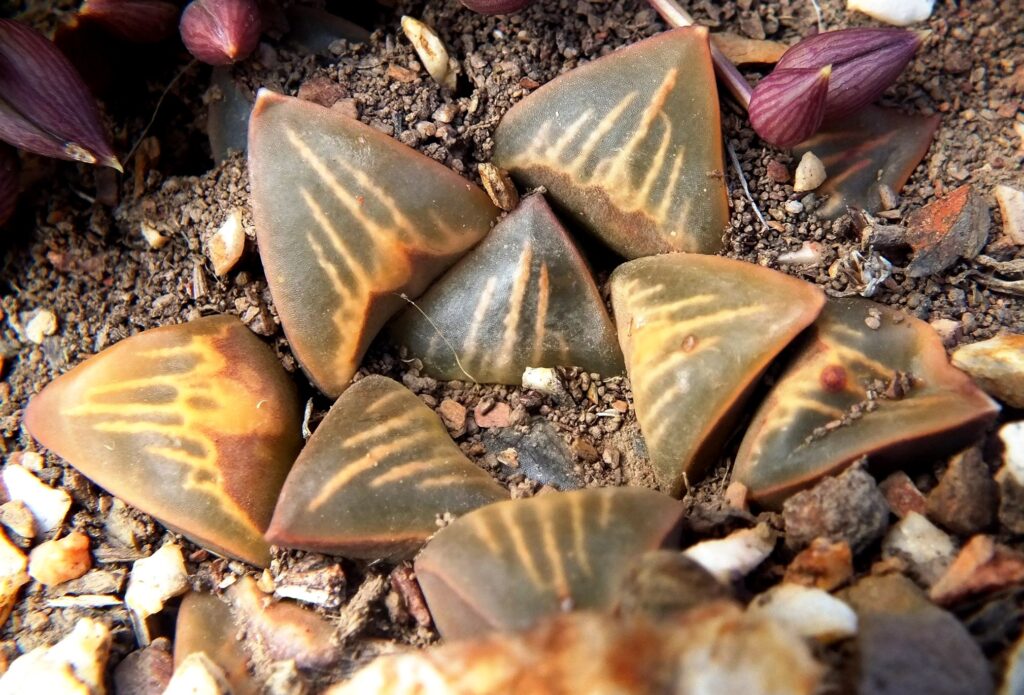
If I were asked to explain how things are put together in creation, I would answer something like this…
Are we knowledgeable? This seems such strange question to ask until one really begins to explore the meaning of information and knowledge. We really seem to live in a world of confusion and disbelief. I ask the question in the sphere of plant classification and this exercise in arranging and organising plants by form and appearance into a system of names an classification that is supposed to make sense and lay the foundation for the basis of still more information and knowledge. But does it actually do that and serve such a profound function. The more I learn of the subject and try to understand all its ramifications, the more concerned I am that we have not addressed Prof. A. Croncquist’s question to his fellow international taxonomists at a world taxonomic summit (Miami, Fairchild Arboretum 1987?)…”Do we know what we are doing?”
Well how can we know if we do not even have a well-defined and decisive concept of what a “species” might actually be? Adding to the confusion is the Linnaean binomial genus/species system that insists there exists a natural system of creation based on idea of survival of the fittest and adaptation of living things to environmental influences. There are scientists today who question this now aged conviction and ask very pertinent questions about the nature of DNA, function and form. It is long time we reviewed belief, convention, habits and systems that do not truly fulfil the need and promises of the time.
Think for a moment what leading writers like Rupert Sheldrake, Stephen Meyer and Donald Hofmann are trying to explain to use beyond the clamour for recognition, acknowledgement and effect we feel so pushed to achieve. What for the sake of meaning are the Platonic solids and what might they have to do with formlessness and form? It is quite incredible to consider that these “solids” and their significance have been virtually ignored in the modern era. The “solids” are the five shapes with regular sides and faces that can be fitted into a cube. The term “solid” is simply a misnomer. They are the diagrams of five energy fields each representing one of the five basic elements of nature viz. earth, water, fire, air and ether. They arise from either the numerical zero or infinite zero at the centre of an imaginary cube, and the points of intensity at the apices of the triangles represent the energy matrices of an expanding cube. Such basic elements of nature were well-known in mysticism and ancient religions and their significance is quite lost in a society mislead by intellectualism and belief systems.
The significance of the energy fields is that they are formless but all forms in creation arise from the organisation and patterns of energy derived from an infinite series of such fields and all matter in creation is organised according to these energy fields.
It is so nice to be able to share memories like this. The mysterious ever different vein patterning calls to mind Dancing wu-li masters. Colour too is so enchanting where the leaves can allow or disallow light into the deep interior. Leaf shape is just as mysterious and no two leaves are ever the same. Language is such funny stuff. “Mutica” is supposed to mean without a point. When Col. Scott encountered H. springbokvlakensis he first took it to be the missing H. mutica that had not yet been identified to a field source and population. G.G. Smith had made a similar mistake and described H. otzenii without realizing that it was Haworth’s H. mutica. I really need to see some old reference material. I am sure the translation for the Latin descriptive term “retuse”, is given by Haworth as meaning “bent back like a thumb”. It is not the contorted shape of a flat leaf with the margins overgrowing the mid point of the leaf as in present day use. In H. mutica there is in fact every degree of “non-pointedness” of the leaves. Perhaps this is one of the significant ways in which Haworthia is mistaken to be different from other plant genera and species. Smith followed Reynolds in how he had collected and described “species”. Now Aloe and Haworthia ARE in the way in which a single specimen of, say, Aloe ferox in any one population can in a general sense taken to represent what Aloe ferox looks like anywhere in its distribution range. This sure does not apply in the haworthiads.
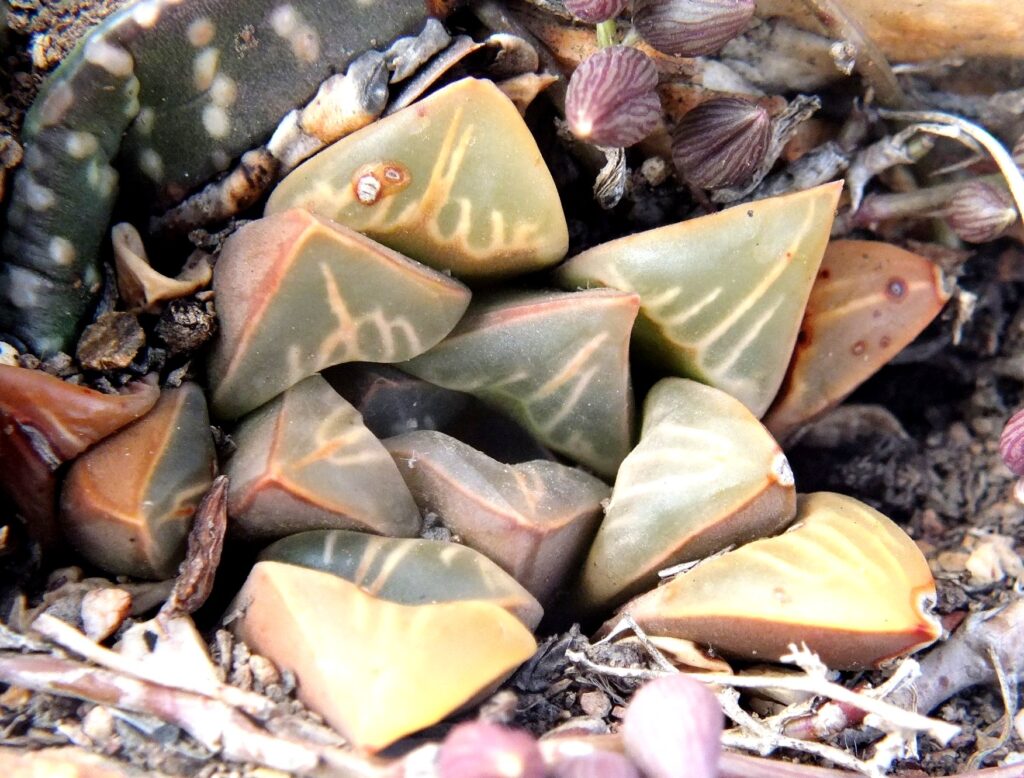


Another 3 from the same population as the previous 5 mutica. Emile Heunis once commented that this was his favourite H species, which coming from the plant wizard he is, is a real recommendation. I can never get enough of these magical nuances of texture colour and shade.
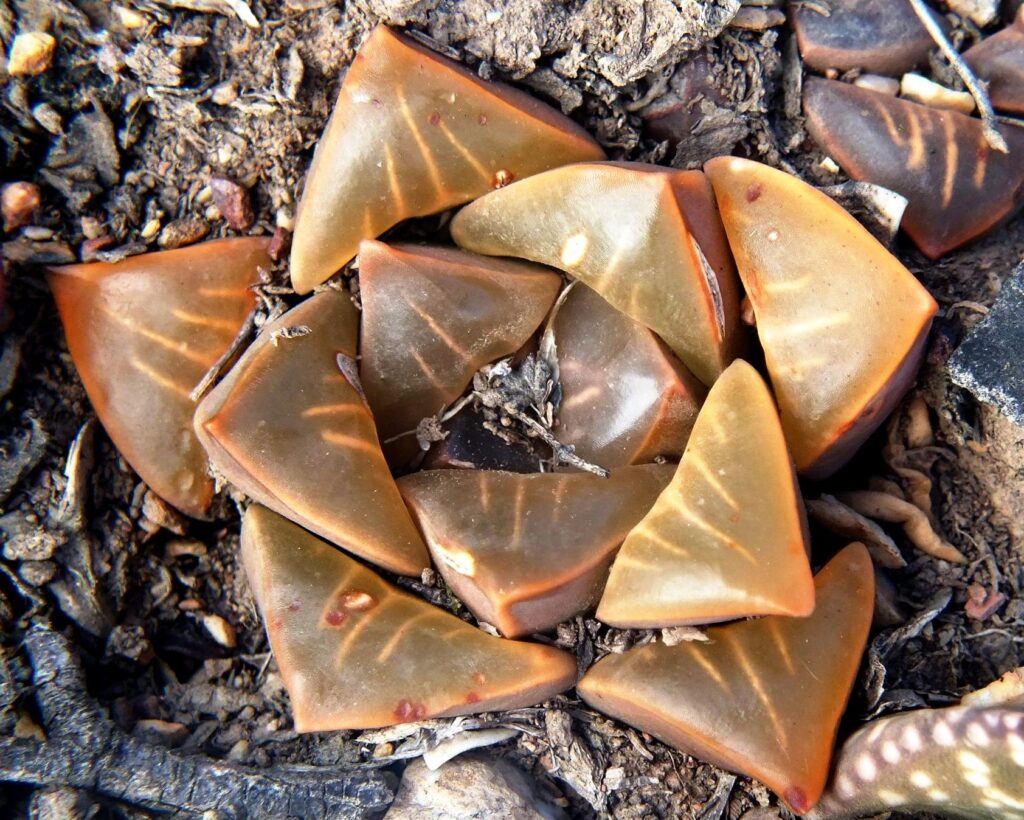
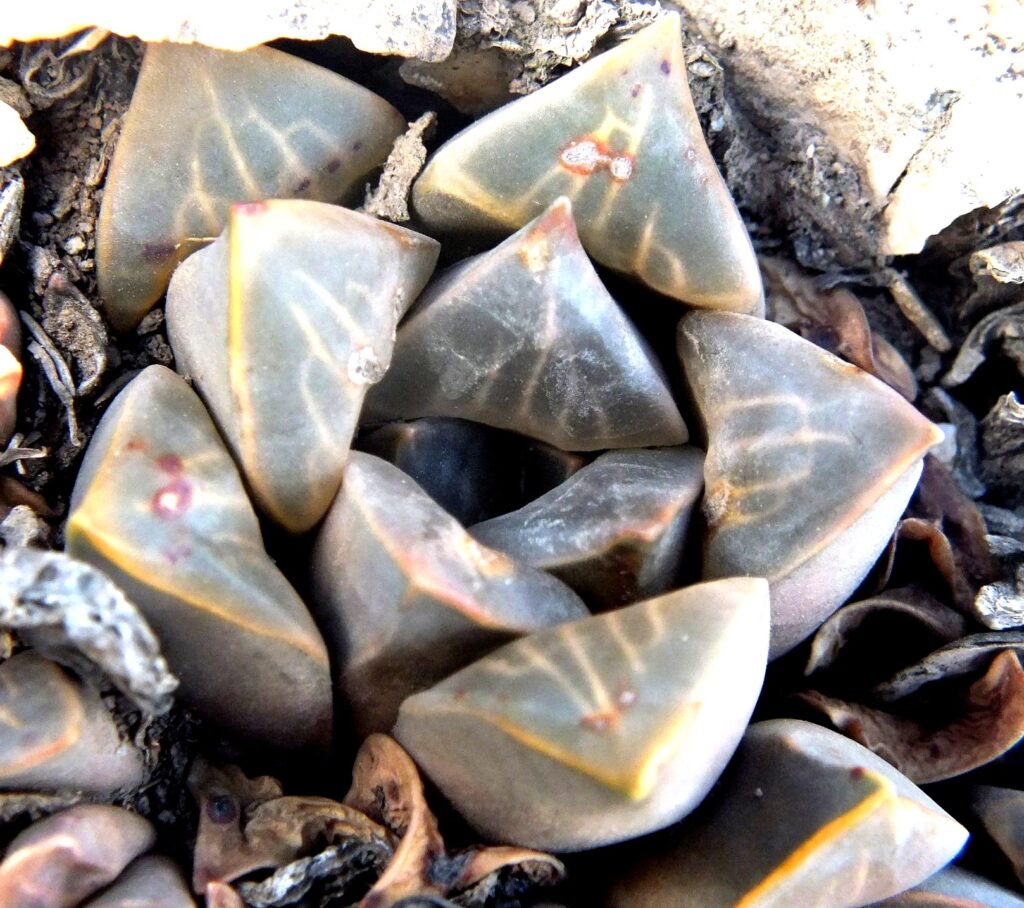
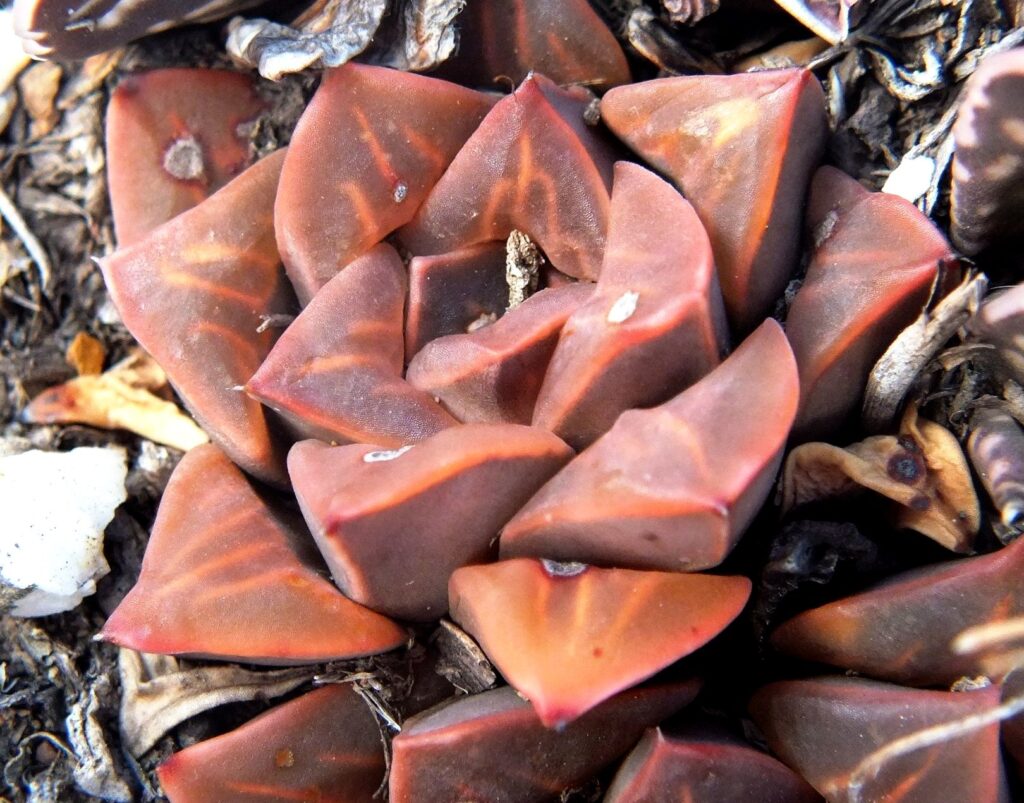
More mutica pictures to muse over. Check individual leaf shapes and especially the dancing flames of the veins as they leave the protected leaf base.
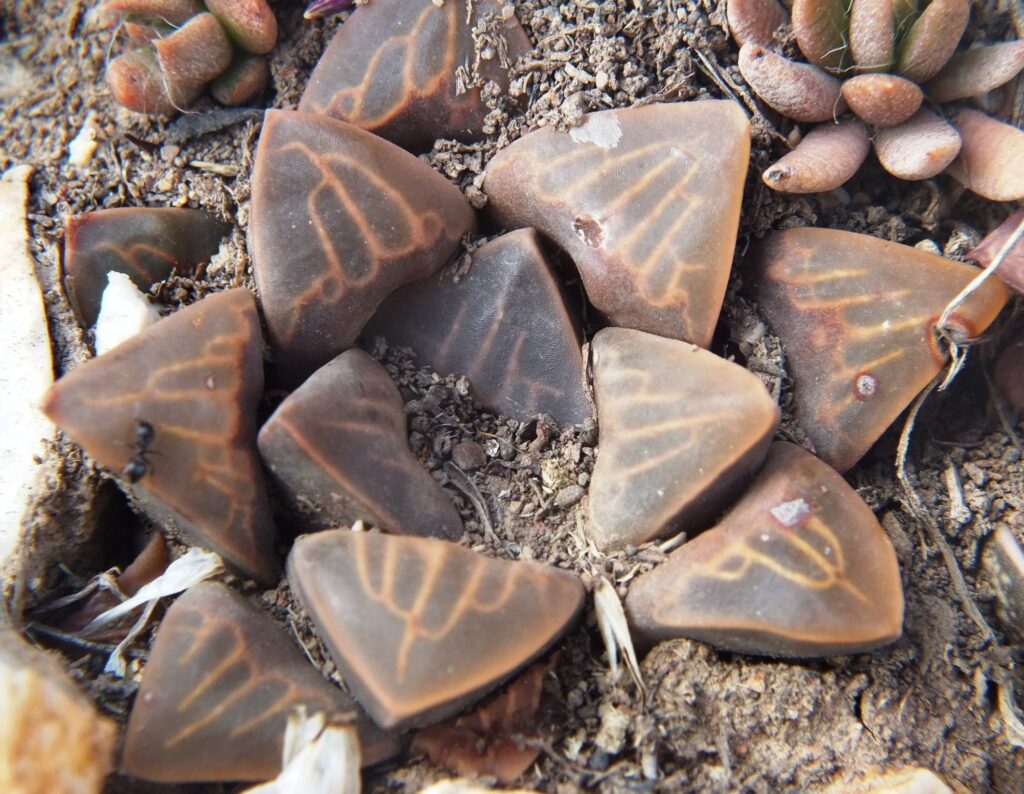
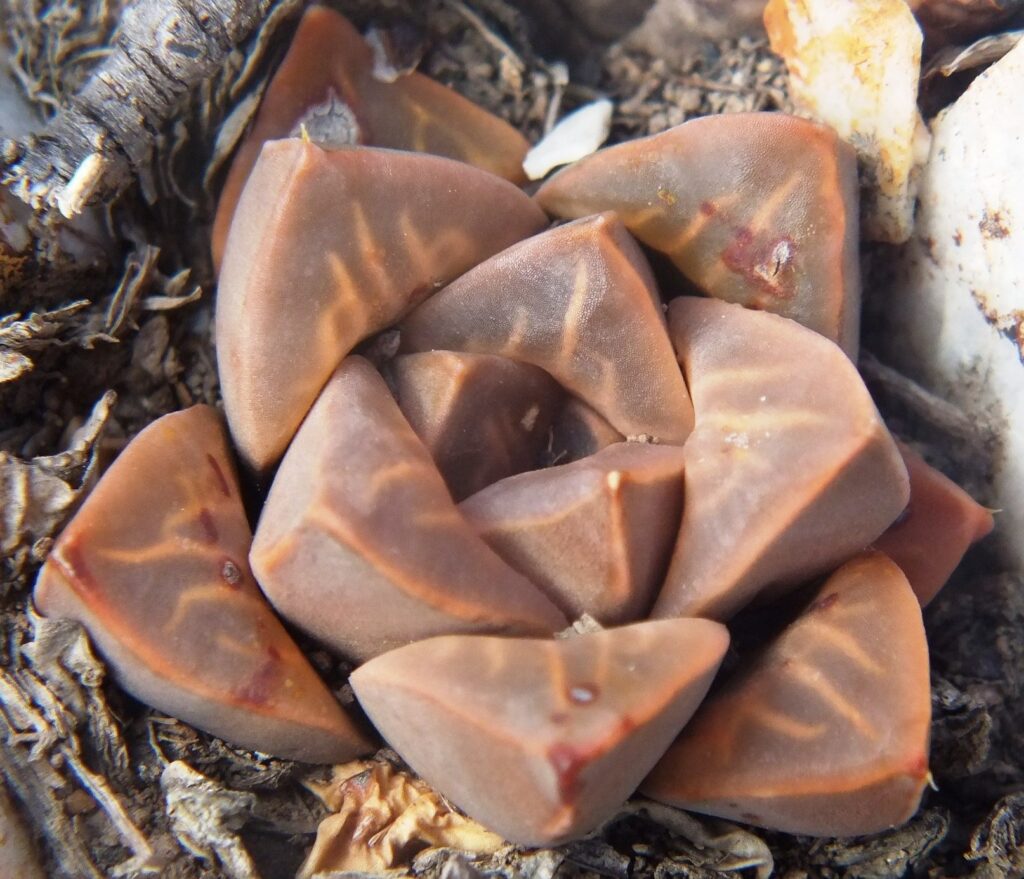

I should make a collage of individual leaves to illustrate venational differences acrooss the spectrum, from plants with very few, many, very windowed and then simply straight. It is the fun stuff that attracts us?
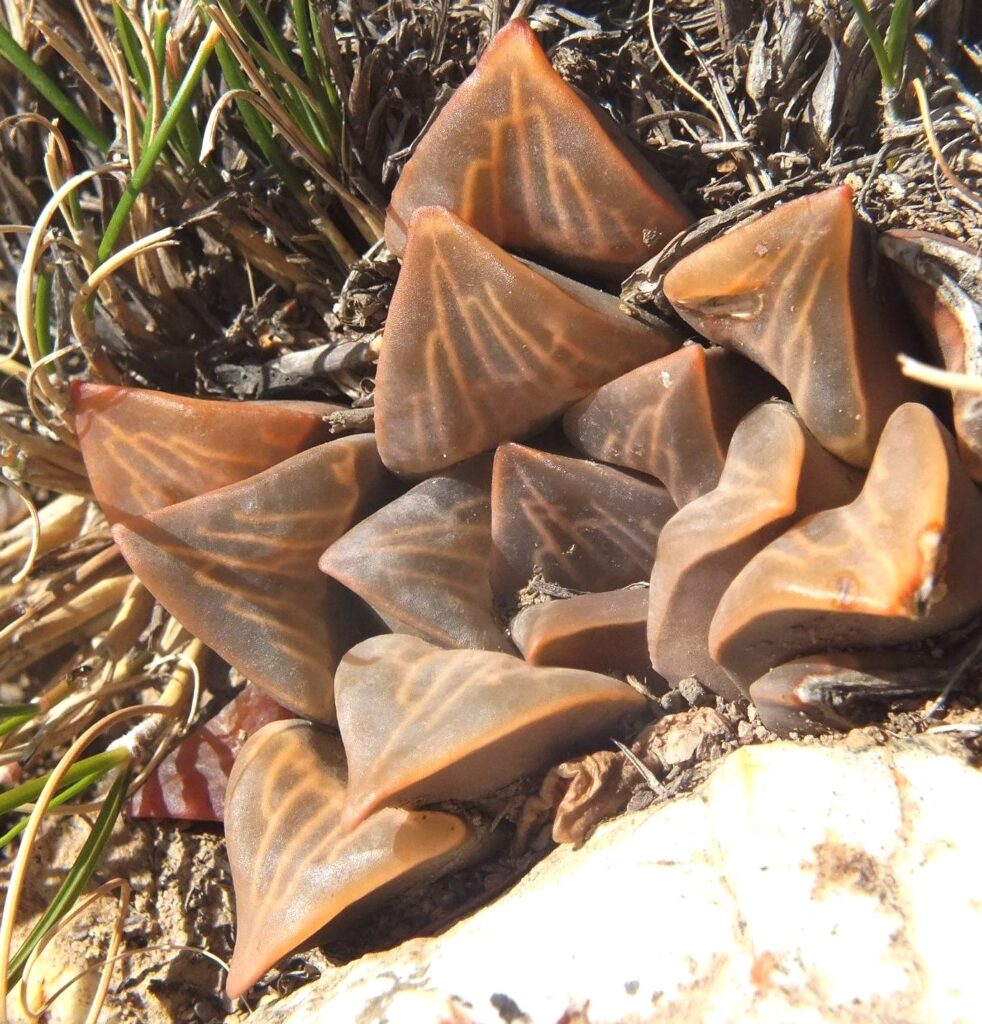

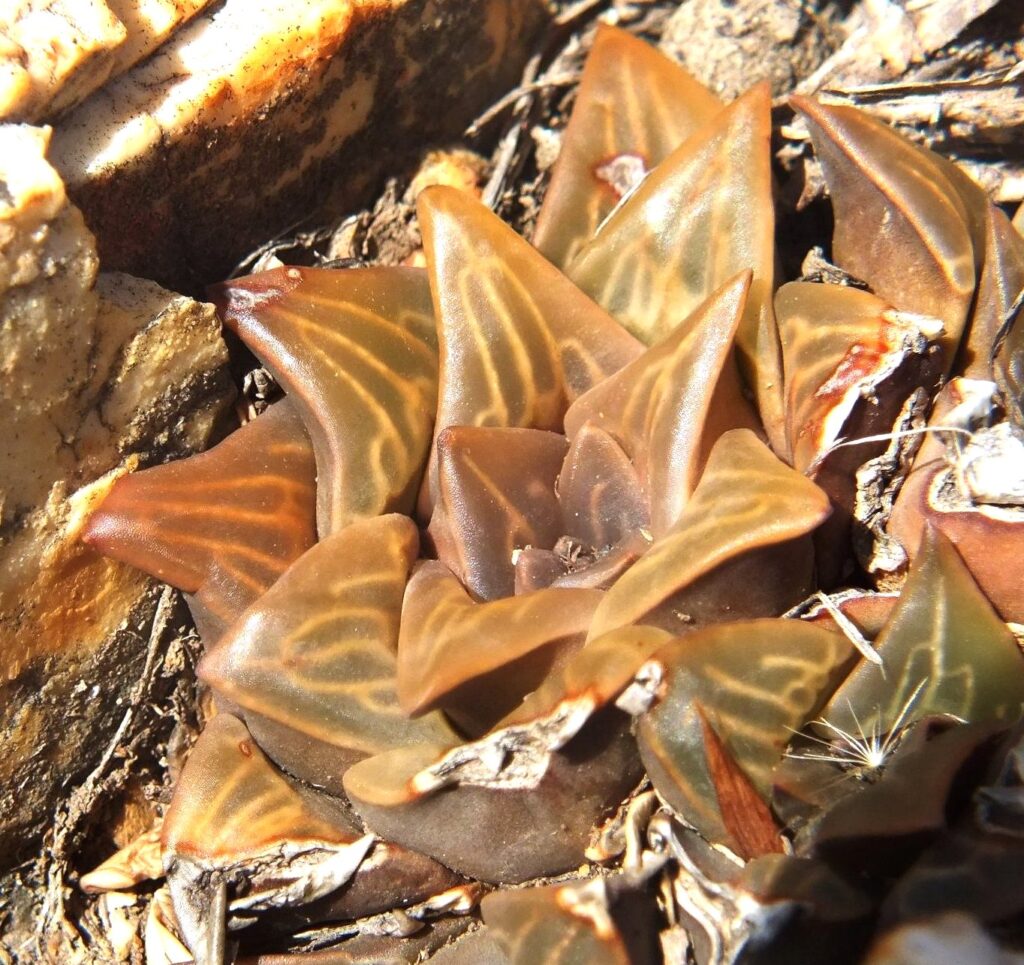
These mutica plants I have posted recently are all from the same place and here are two clones that demonstrate huge differences in venation. Incidentally, some of the clones in this population were very proliferous.
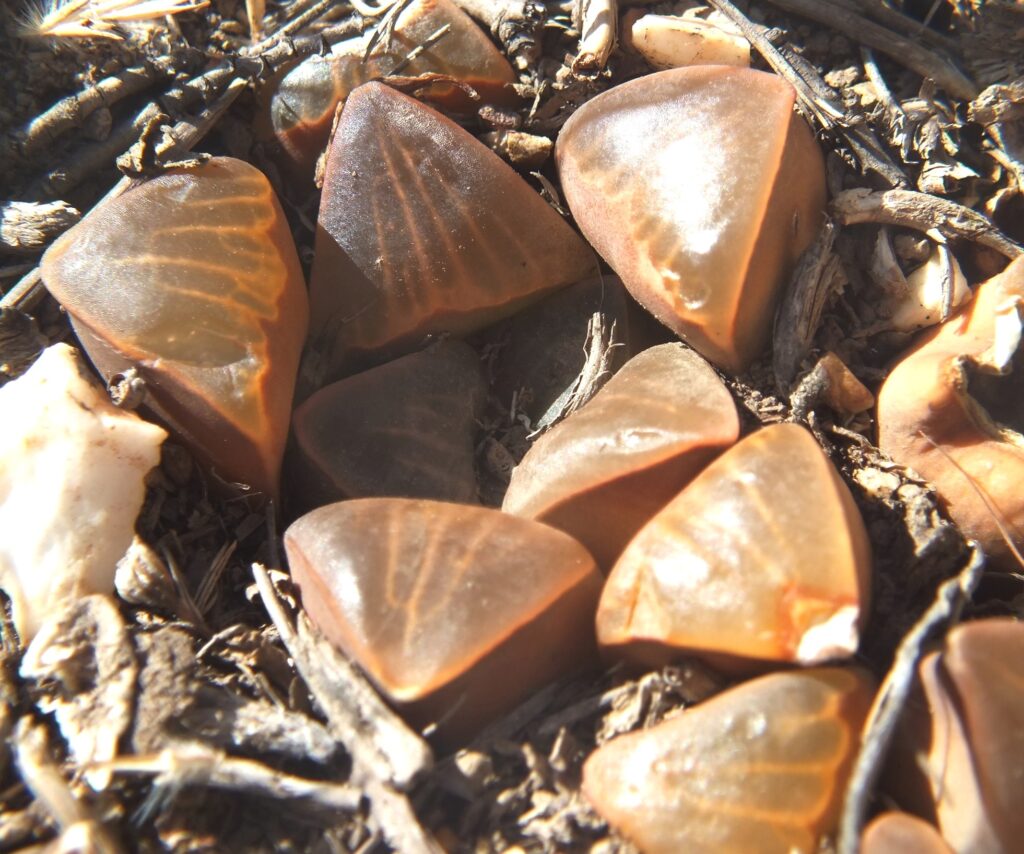
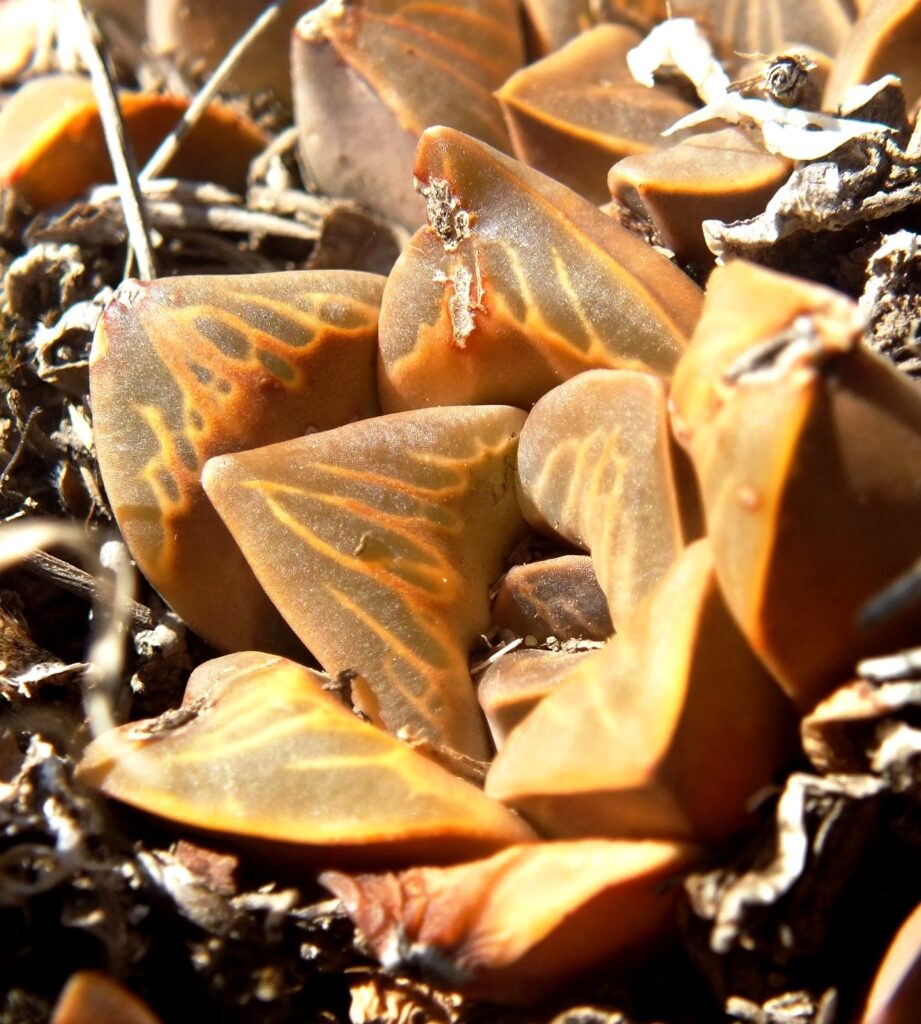
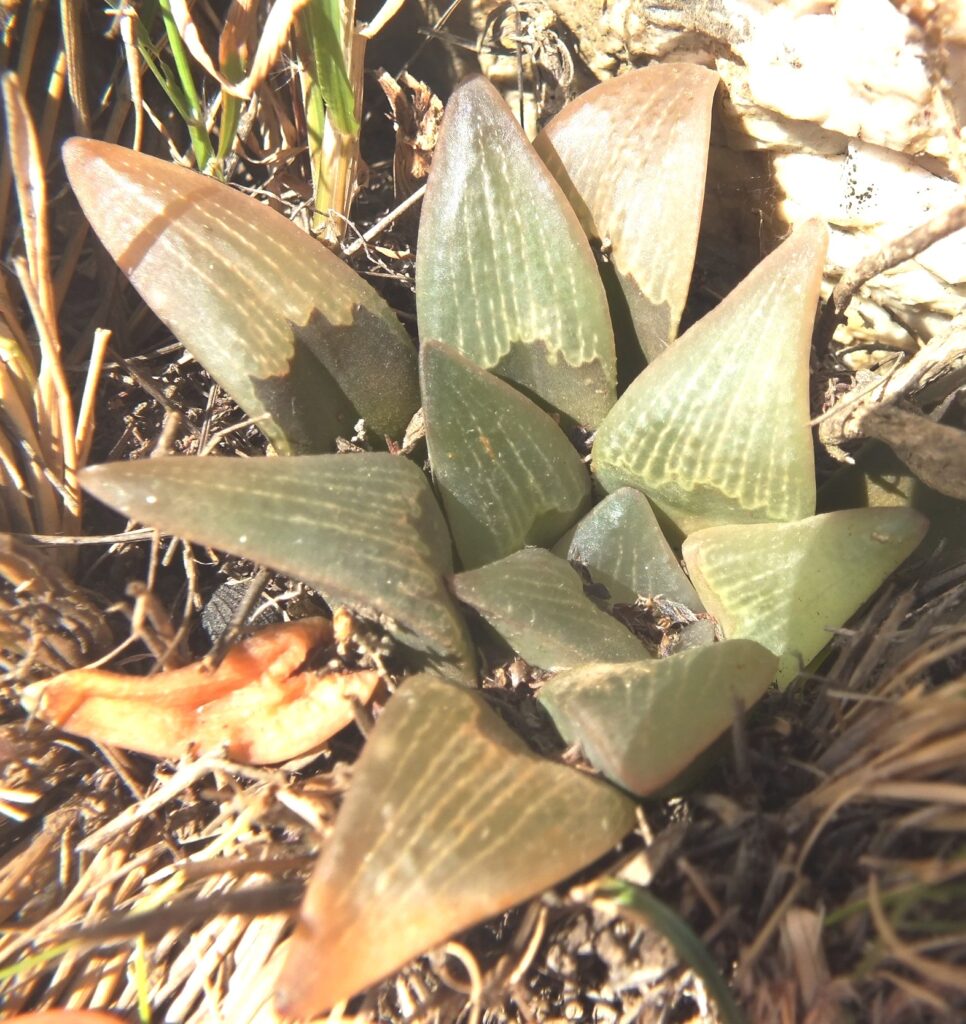
This was such a strong population. It seems so strange musing about variability and how we each deal with it. I sometimes just examine the leaf shapes and reflect that often no two leaves have the same outline and end shape.
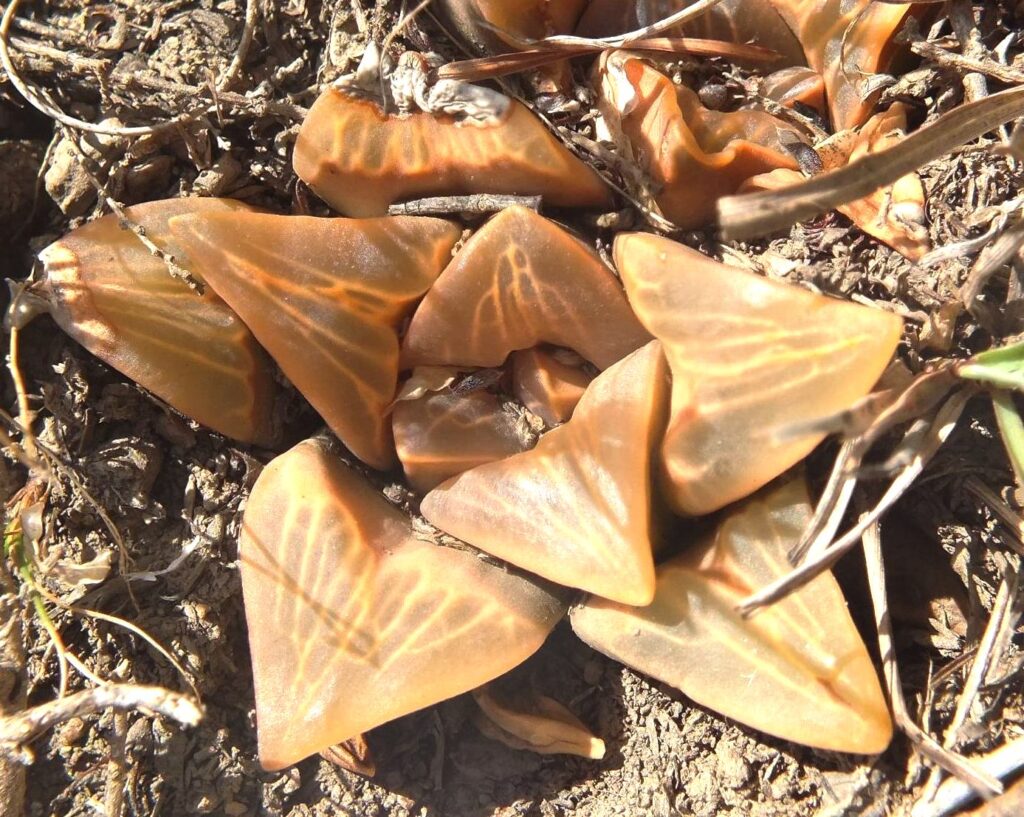
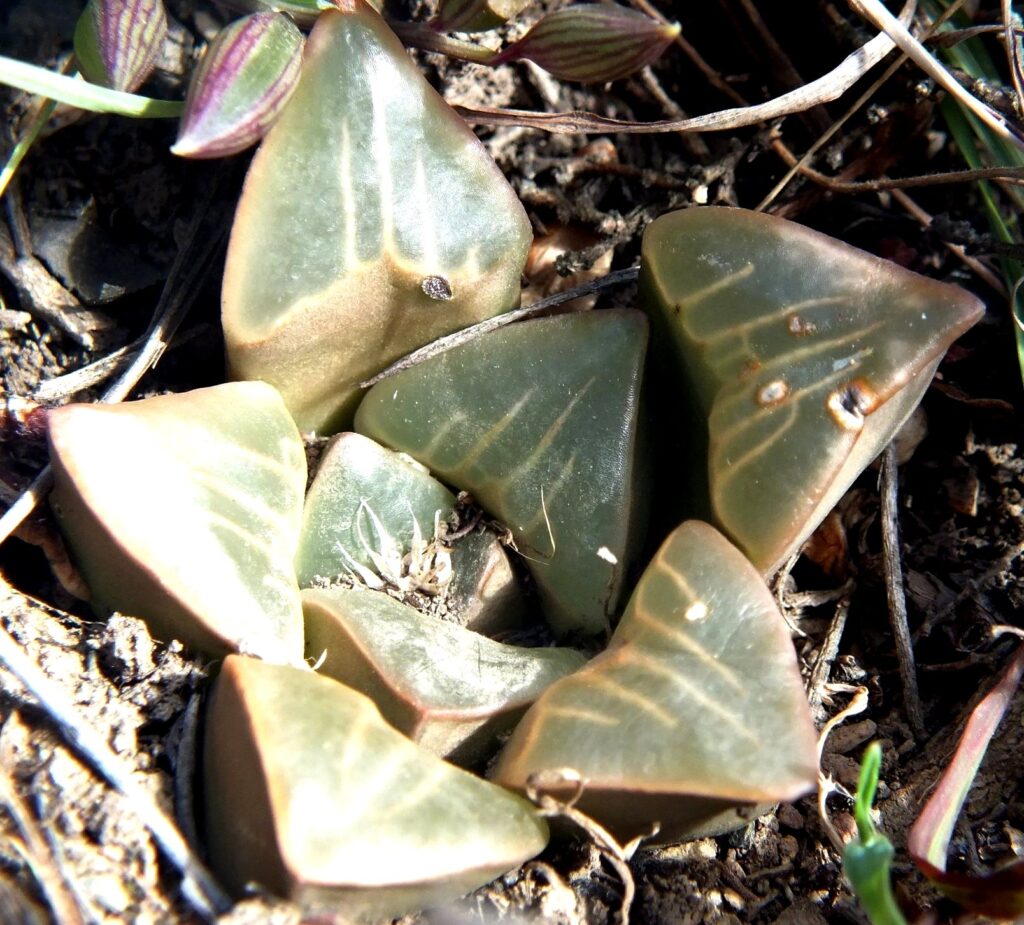
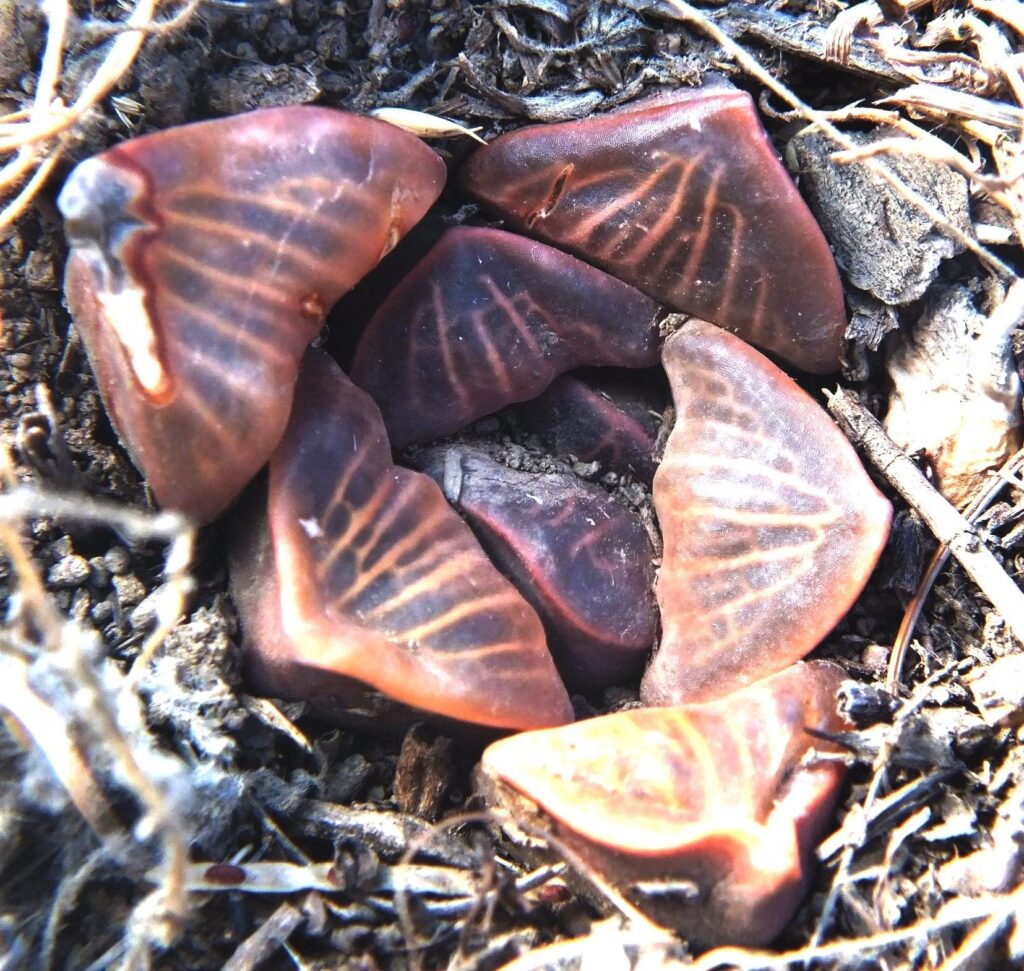
I am at the end of my active life and realise there is still an important statement to make about these plants. Not only do the plants change in respect of where and under what conditions, they change in respect of our own personal perceptions and attitudes too. Do our perceptions and attitudes change like this as well. There are the last 4 mutica pictures I have of this one population. It is extraordinary to think of it as something permanently etched on the screen of time. No matter who or what does what, it can be taken to exit and it is just a matter of having valued that experience of contact and its existence.
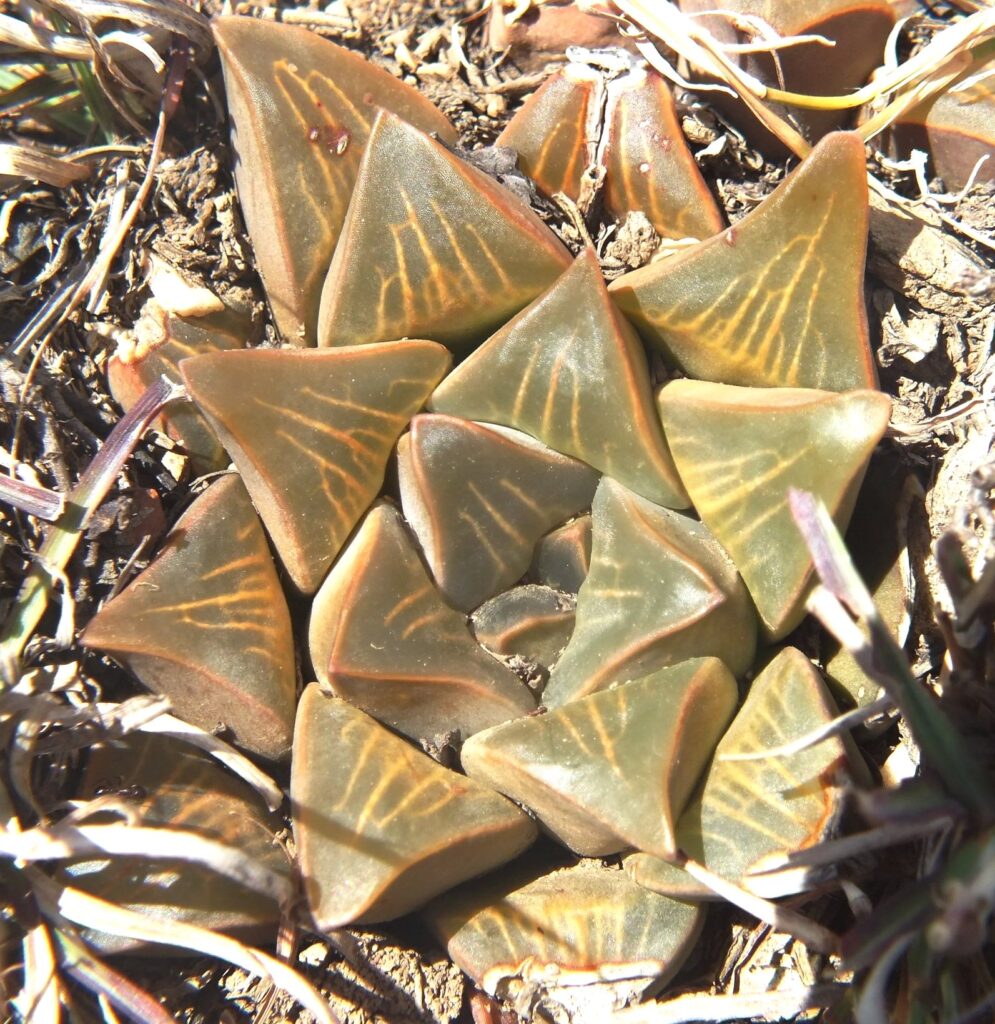


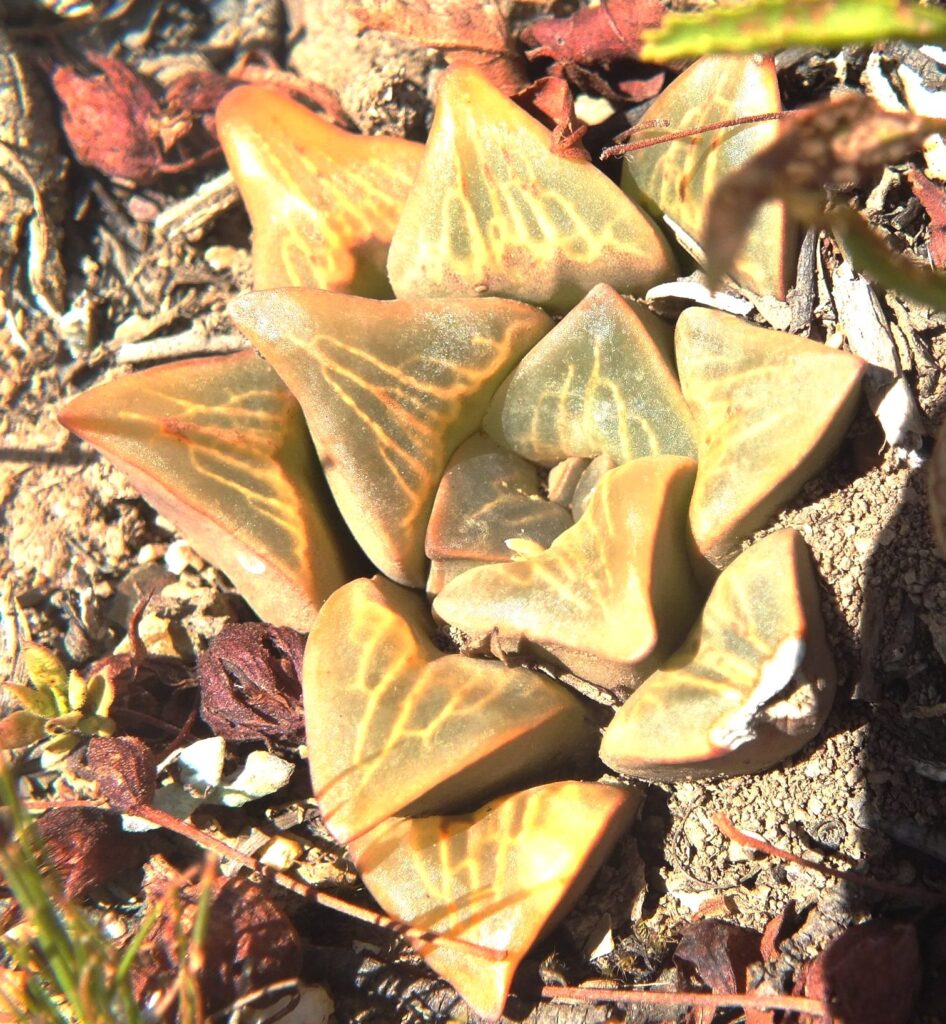
I have often taken people into the field – or at least accompanied them, as they make real contact with nature for virtually the first time. Also I have been taken into the field and shown things many times, remembering new experience and plants and animals I had never seen before. Often being amazed by being told that things that look different are the same, and things that look the same are different – despite far too much experience to be so easily fooled. Plant and animal life is just incredibly complex and I think we have all been suckered into looking at things in the wrong way. Gordon Rowley was an amazing man and I am so glad to have met him and benefitted from his opinions and expertise. He was wanting me to maintain the plethora of names against my own wish to simply try and understand the system that was the science of the times suggested was correct. I think Gordon was right and I am sorry I did not have the means and abilities to maintain all those many names in meaningful way. I will look around and see what comes to mind. But largely I will unfairly lay the blame at the magazines and journals that serve collector and grower interests. The prime function of these societies, their committees and activities should be to manage the language and names that make up information and knowledge. ♦
